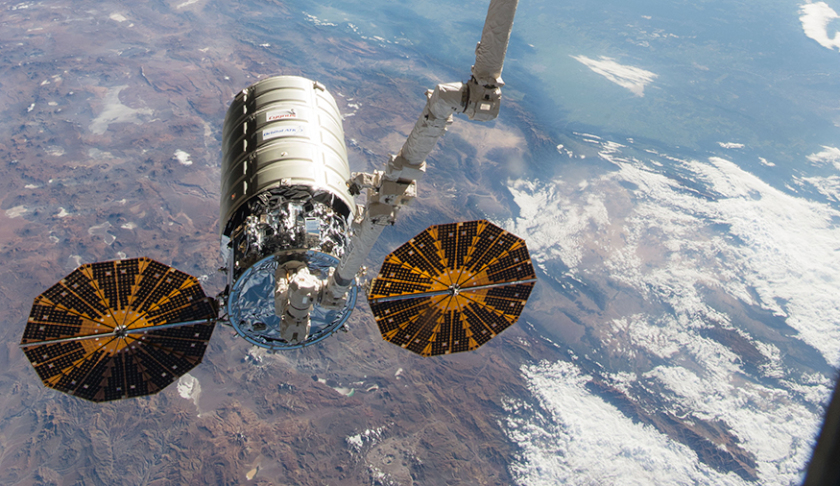The Cygnus unit, SS John Young, now begins the second half of its mission by re-positioning above the station to deploy two CubeSats via the NanoRacks External Cygnus Deployer and two CubeSats from the Slingshot CubeSat Deployer. Cygnus will then lower its orbit below the station for another NanoRacks deployment of one CubeSat.
This specific satellite deployment operation marks the first dual altitude deployment for Cygnus, further demonstrating the spacecraft’s capabilities beyond cargo delivery and removal.
Frank DeMauro, vice president and general manager, space systems at Northrop Grumman, said, "NG-10 continues to highlight Northrop Grumman’s ability to meet the needs of multiple customers throughout one mission to the International Space Station."
During its secondary mission, the spacecraft will also operate a commercial powered payload mounted in the Slingshot launch system as another new customer, UbiquitiLink. UbiqutiLink’s telecommunications payload antenna will test the ability to send and receive messages in areas without ground-based connectivity.
The Slingshot CubeSat Deployer System, a new commercial customer for Cygnus, was also installed for its inaugural flight on the spacecraft. Slingshot, a flexible platform that can fly hosted payloads and CubeSats, further demonstrates the ability of Cygnus to host multiple secondary payloads as part of a single mission. Cygnus departed from the ISS loaded with more than 2,500 kilograms (5,500 pounds) of disposal cargo.
Part of the NG-10 mission included the deployment of nano-satellites above the station, the cost-effective High E-Frequency Satellite (CHEFSat) and MYSat-1.
CHEFSat tests and prepares consumer communications technology for use in space. MYSat-1 marks the first satellite developed by Khalifa University in Abu Dhabi, United Arab Emirates. MYSat-1 was developed as part of Khalifa’s Space Systems and Technology Concentration, a joint program established in 2015 in collaboration with UAE-based satellite operator Al Yah Satellite Communications Company (Yahsat) and Northrop Grumman.
"During each trip to the station, Cygnus continues to demonstrate additional capabilities as we partner with new commercial customers. These new relationships will create opportunities for the International Space Station to expand its role as a unique platform for ground-breaking science," DeMauro added.
The next Cygnus launch, known as the NG-11 mission, will be Northrop Grumman’s final launch under the CRS-1 contract and is currently scheduled for April. During this mission, Cygnus will demonstrate its unique capability to fly solo through space for an extended duration after departing from the station.
This innovation is another example of Cygnus’s potential to double as a free-flying laboratory for science experiments, technology demonstrations and as a CubeSat launch platform. These enhancements will build on the positive impact of the ISS to develop a new economy in low-Earth orbit.
Northrop Grumman is a leading global security company providing innovative systems, products and solutions in autonomous systems, cyber, C4ISR, space, strike, and logistics and modernisation to customers worldwide.

